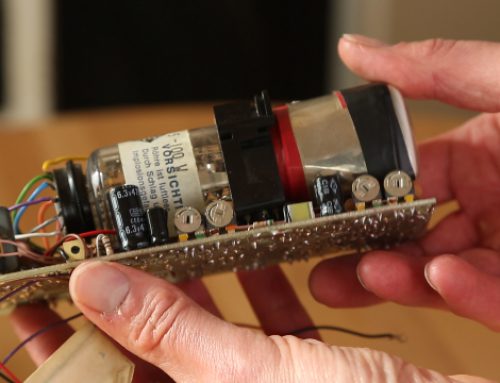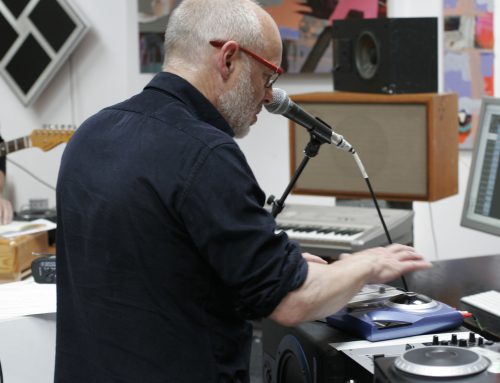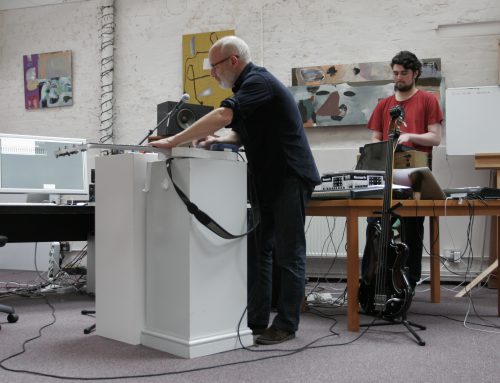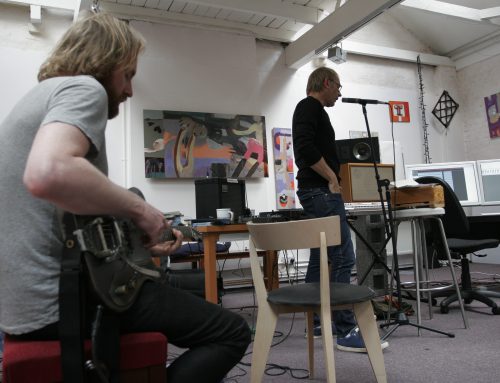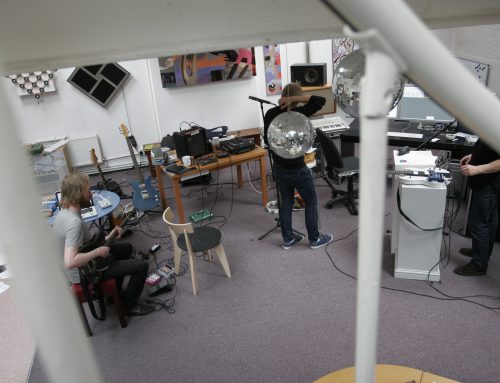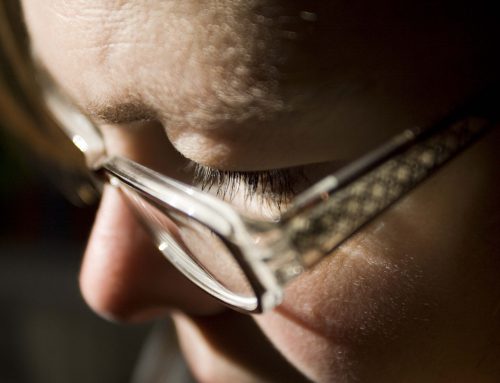As a director of films, Richard Bracewell is just beginning to make a name for himself. His debut, The Gigolos, was shot on a tiny budget and starred two unknown performers who, along with the rest of the cast, improvised their parts on location. The film was a critical success giving Richard the chance to make his second movie, Cuckoo, Staring Laura Fraser, Richard E. Grant and Tamsin Greig. Richard talks about his background, motivation and techniques.
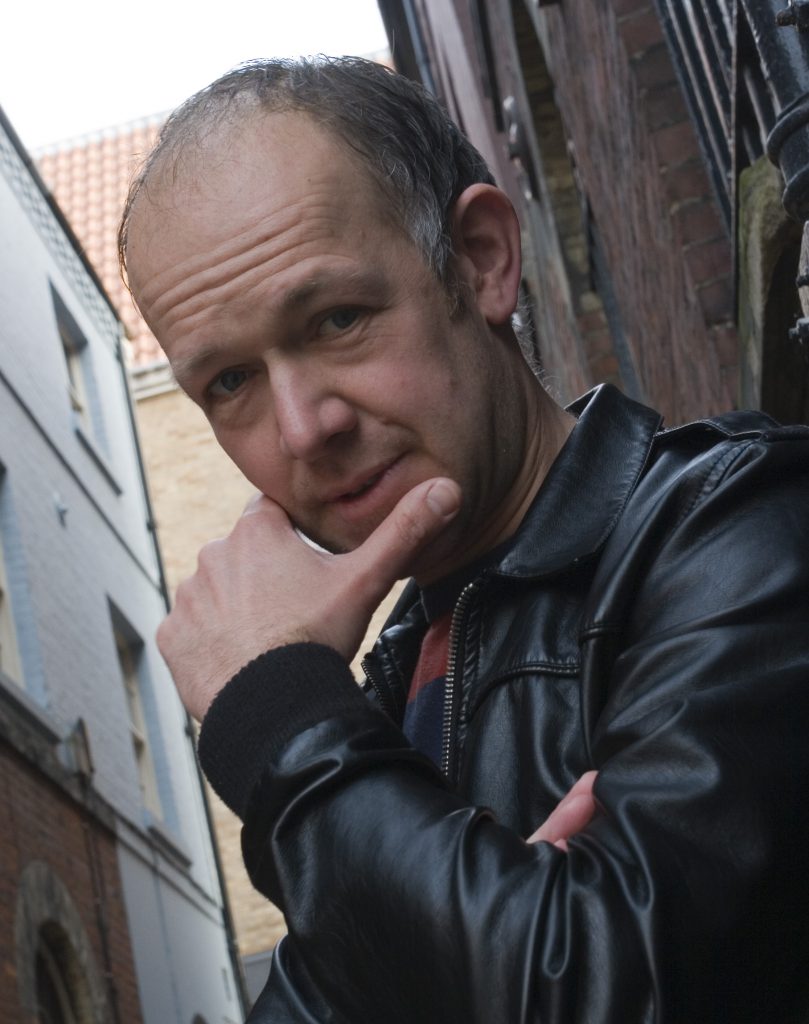
Richard Bracewell in April 2011. Photo by TF
“It’s all about the story – that’s all that matters,” Richard insists. “We are not aiming necessarily to make a budget hundred-pound film or big ten-million-pound film, or work in the UK, Russia or LA. It just depends on the story that comes out. I know that sounds either romantic or wishy-washy, but that is the motivation for doing it.
“Making a film takes years and years, from the point of its conception to its release. You develop the idea, find the right people to work with, cast it, finance it, film it, distribute it, and then you wait to see how people respond. That can take ten years. There aren’t many things in your life where you have to say to yourself, ‘I’ve got to be motivated by this in ten years time.’ What else can you say that of in your working life?
“Unless you are a jobbing writer and director and basically take the next job that’s offered, the thing that motivates you to make a film is the thing that’s going to keep you interested, and the thing that drives me is telling an interesting story.”
Back Story
The story of how Richard became a filmmaker is an interesting one in itself. He left university with a degree in history but no real idea what to do with himself. At first he harboured ambitions of perhaps becoming a journalist, on the basis of being rather keen on writing while still at school. “I was the really annoying kid who wrote the class assemblies,” laughs Richard. “If there was any kind of event – if the class or tutor form had to do a performance or play, for example – I was the guy who went home and wrote it all the night before! But I didn’t have any writers in the family and I didn’t know anybody who was a writer to ask them about writing as a profession.
“I also played piano and was in bands. Music was a big thing at school and there was a fake David Bowie and a fake U2. I played Cure covers in a band which was just about the right thing for me because I was a Cure fan.
“I played a lot of jazz which was a strange thing to do when you are sixteen or seventeen. I don’t know why, it was just something I discovered; there was no one saying I should get into this or that. Unfortunately I wasn’t nearly good enough to do it professionally, but, like Salieri in Amadeus, I had enough talent to recognise really amazing talent when I saw it. I remember that frustration when I realized that I was never going to be good enough.
“I tentatively tried to do that as a career when I moved to London at the age of 21, and got a job playing piano in a bar. I even spent a summer in New York playing piano in bars. I was that standard – I could play the piano in a bar in the background. That was the start and the end of that career!”
Richard even tried his luck at stand-up comedy, bravely taking to the stage at several ‘open mic’ events. “I suppose I might have made it if I’d really, really tried hard, but fundamentally, I probably wasn’t quite good enough.
“When I did my first open mic spot in a North London pub, there was a guy on there doing his first night as well. I went down kind of OK: nobody booed me, but no one thought I was the next Richard Prior either. But the other guy went on as a very funny posh character wearing a wig. At the end of the act he pulled his wig off to show that he was completely bald, and it was Matt Lucas! So obviously our careers diverged radically after that. I wasn’t as good as him. I could see how funny, clever and charismatic somebody like that was, and thought, ‘OK, I’m not going to do this.’
“But I saw people that I knew, who were doing stand-up, writing and submitting stuff for TV sketch shows and I thought, ‘Well, if they are getting into that then perhaps this is something I could do as well. I didn’t know anyone who made films, so it took me quite a long time to work out that this was something that I was allowed to do. But I’d liked movies long before that and watched them endlessly when I was a kid.
“I remember getting hold of a video camera when I was about 22. People didn’t have cameras back then because they were still really expensive. I had to go through the Yellow Pages to find the guy who made wedding videos and hire his VHS camera for a week.
“Round about the same time someone lent me a Super 8 camera, which seemed very romantic and glamorous, but was quite expensive. A lot of the people I went to college with became actors and writers and toured the fringe festivals. They often used to ask for little films to project as part of the show, and they’d call me and ask if I’d shoot a Super 8 loop.
“I didn’t have anyone to tell me what to do or how to do it so I thought what you did was go to film school. I filled in some film school applications but I didn’t deliver them in the end. But in the process I met a guy who was an ex-BBC film editor and worked at the BFI. I’d started to make short films by then but didn’t know anything about editing them. This guy had access to some editing kit, so I took all the material to him and he taught me the fundamentals of editing. So I pieced it all together.
“There was no software, it was all machine based. That was in the very early 1990s when Avid was in its absolute infancy and there were no non-linear computer editing system. Editing was done using a hardware edit controller which would run two tape decks. Basically, it was tape-to-tape recording, just on Betacam SP, but it was frame accurate. I suppose it was more like editing film because it was linear. All the news or drama shot on tape was edited that way.
“And he had this amazing collection of BBC training manuals from the ’70s and ’80s. They explained how to be a director the BBC way. I learnt everything from those, literally! The BBC approach is very technical, even though you might think of directing as being a very creative pursuit. They make sure you have got the fundamentals covered and I’m quite a believer in that.
“I think most of the great and radically different art is made by people who have a very technical grounding. So painters who break the mould are almost inevitably great draughtsmen to begin with. A lot of radical British filmmakers of the 1960s and ’70s, for example, came out of a very staid, ridged early kind of BBC training. Directors like Ken Loach, Mike Leigh and Stephen Frears. So if you do break the rules you know why you are doing it. In other words, you learn the rules in order to be able to break them.
So learning the BBC technique meant that I had enough skills to put on screen what I wanted to explore.”
Fringe Benefits
Richard continued making his short films for some years, improving his skills and gaining experience. Many of them were for performers doing the rounds on the stand-up comedy circuit and as part of the Edinburgh Fringe Festival, but almost all the jobs were non-paid. Eventually Richard began to consider the possibility of actually screening his own work at the Fringe Festival, but identified a major problem.
“I got to know the fringe theatre circuit really well and realized that if you made a short film, however good it was, it would be really difficult to find a venue where you could actually screen it to anybody. This was some time around 1994, way before you could stream short films off of the internet. I thought that the thing to do was build the venue.”
Richard’s solution was to construct his own cinema in the busy courtyard of a popular Edinburgh venue called The Pleasance, naming his picture house ‘The Smallest Cinema in the World’. The external structure was simply a large garden shed bought from MFI and assembled on site, but Richard and his collaborators ensured that the inside looked and felt like a real theatre.
“The interior was like a plush picture palace with chandelier lighting and three rows of real velveteen cinema seats. The guy who raised the money for us blagged ten grand out of MGM cinemas, which seemed like untold riches! He was a total inveterate salesman. MGM put their name over the door so it ended up as ‘The MGM Smallest Cinema in the World’.
“We also went to Richer Sounds in Edinburgh and told them that we had the smallest cinema in the world, but needed a projector and some speakers. They came to have a look and were really sold on the idea, so they loaned us an incredibly valuable projector and installed it in the cinema with the speakers.”
Having built the cinema, Richard was able to premier the three short films he had made, enhancing the experience with spoof advertisements and MGM film trailers.
“A friend of mine, who worked in a cinema, had surreptitiously kept all his favourite 1970s commercials, and we borrowed a telecine facility and transferred everything to tape. MGM sent us some trailers for the films that were screening that year and we also wrote to Pearl & Dean and got the Pearl & Dean theme.
“So each screening had a little package comprising trailers, fake adverts, and one of my short films, which we showed endlessly throughout the day.”
During his two month stay in Edinburgh, Richard managed to find a student willing to let him bed down on her floor, and made ends meet by taking the occasional job with a temping agency. No doubt it must have come as a great relief when the festival opened and the little cinema very quickly began generated interest, thanks in part to the star qualities of some of the performers Richard had filmed.
“I knew I needed talent that I could work with on screen, and a great story to shoot. One film starred an aspiring screenwriter called David Wolstencroft, who went on to create Spooks for the BBC and wrote most of the first series. He was clearly going places, so we were working with some talent. With David we did a great comedy short called How to Write a Hollywood Screenplay, which was a spoof screenplay lecture. I think he’d seen Syd Fields or Robert McKee do one of these screenplay lectures.
“I also did one with Al Murray, who someone I knew because he was touring a show. He said ‘I’ve got this idea for a character who is based in a pub and is like a pub landlord,’ so we did a 10 minute short with this character who has subsequently become incredibly famous and notorious. Again, he was amazing and clearly a big star and household name in the waiting.
“And because it was the Fringe there were a lot of agents and film producers who were there, watching or scouting for new comic talent. Acts like Mel and Sue, who did Light Lunch, got picked up and Al got picked up by an agency. Because we were in the courtyard of this big venue, a lot of the agents and producers came to see these short films. One guy, who was a TV producer, said ‘I’m making a comedy show in a few months time and I’m looking for a director to do all the VTs,’ which are all the single camera and location shoots. He said ‘Do you want to come and do it?’ So as a direct result of making the smallest cinema and the shorts I got an offer to do this job for London Weekend Television, as it was then. That was a break and suddenly I was a TV director! I’d got an actually job and was paid to direct and I’d circumnavigated being a TV runner or an assistant director.”
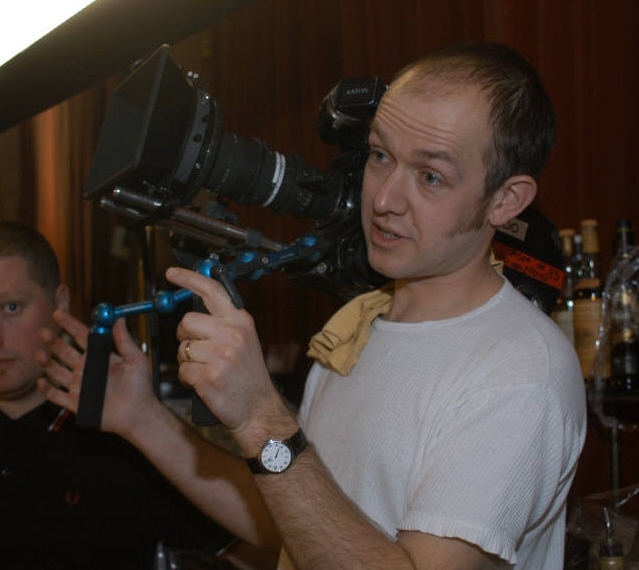
Richard filming The Gigolos
Freelancing For TV
The show for which Richard began directing the VT shoots was a topical news programme called Stuff the Week, which began in 1997 and ran for eleven episodes. “I only did that for about two months but that was enough. Between that and making The Gigolos, which was my first film, I basically did TV comedy entertainment as a director and a producer.
So I’d got out and produce reports and did that for The Eleven O’Clock Show. I worked on the first series and did a report with Sacha Baron Cohen as Ali G on practically the first day I started. That was his big break because he went straight into his own series for Channel 4. I’d left by the time Ricky Gervais joined the show, but I once directed him to the toilet! So I did a whole lot of jobs like that.
“I was a post-production director on two series of Ruby Wax’s show for BBC2, where I supervised the edit of the show recordings. We’d get two hours of show delivered and have to turn it into 40 minutes, so that’s a very high-profile thing to do.
“But although it was high-profile, it was working as a jobbing director and, at that point, I knew that what I was interested in was making films. Working in TV was a way of getting paid, honing my skills and meeting people. When we were making a series for Sky for the millennium night, for example, I met Craig Cotterill, who has edited both the films we’ve done.”
Making The Gigolos
In 2004 Richard made the brave move of starting his own film production company together with his brother, Tony. They called the company Punk Cinema Limited, the name referring to the punk ethos of independence and direct action rather than any particular style or musical content. Having previously worked in PR and marketing, Tony took on the management of the business, leaving Richard free to concentrate on making the films. Punk Cinema’s first release, The Gigolos followed soon after, receiving its premiere at the AFI FEST in November 2005.
The leading actors in the film, Sacha Tarter and Trevor Sather, came up with the idea and developed it further with Richard. Despite carefully planning the scenes in advance, most of the dialogue was improvised by the performers while the camera rolled, the intention being to acquire a documentary-like feel. The female leads were played by Susannah York, Sian Phillips, Angela Pleasence and Anna Massey, who all readily agreed to the improvised way of working. Much of the filming was done ‘guerrilla style’; taking advantage of London’s streets and architecture. For this to be possible, Richard only used a small crew, who could move quickly and respond to on-the-spot changes. Richard explains how it all started.
“The reason for doing it was entirely, as all the best things to do with film are, to do with the story. I’d already made a TV pilot called The Big Idea with Sasha and Trevor and I thought they were great and had a real rapport. But the project floundered in TV commissioning and I’d already had lots of experience of that so I said to them ‘While TV commissioners decided to do nothing with it, if you have got an idea that we can turn into a film then lets do it.’ And we very quickly came upon the idea of doing something about gigolos where Sasha is a gigolo and Trevor is his assistant, they end up having to swap places and are forced to re-evaluate what they mean to each other.”
Despite working hard to develop the overall story line, Richard encouraged Sacha and Trevor to push ahead without a script. He explains why.
“We thought that if it was too formal and scripted it would just feel like a cheap film so we went for an almost documentary style. We also wanted it to be improvised so that it would make the audience feel as though they were voyeurs, getting a glimpse of this tantalising world that was just out of reach. It opens in a very odd, voyeuristic way, so you feel like you have stumbled on the lives of these two guys.
“I also thought that if the stars of the film are totally unknown and I have never made a film before, then it’s not going to make a lot of difference if we haven’t got a script.”
Choosing The Kit
To shoot The Gigolos, Richard chose the Super 16 film format, which has effectively superseded 16mm and is often used as a cheaper alternative to 35mm. His camera was an Arri SR2 fitted with a zoom lens (rather than a selection of prime lenses with fixed focal lengths), generally set to the equivalent of a 50mm lens on a 35mm camera. Everything was shot with the single Arri SR2 and zoom lens.
“I took the decision to shoot with a zoom because there was a benefit in terms of cost – taking out a zoom is cheaper than hiring a complete set of primes. Also, with such a small crew, it was unreasonable to expect my camera assistant, Rab Harling, to be changing lenses on each shot – he already had enough on his plate as focus puller and clapper loader.
“The creative justification for shooting entirely with a zoom was that it allowed me to pick the shot sizes without changing the set-up. In other words, we could run long takes and I could direct the film in camera, without stopping and starting the actors. Because The Gigolos was improvised I needed the camera and sound departments to be as unobtrusive as possible.
“We didn’t alter the camera shutter angle; everything we did to achieve the feel of a documentary was through lensing and lighting, or the absence of it.
“We chose 16mm rather than 35mm because the stock and kit were cheaper, the camera was smaller and more portable, and chiefly because 16mm magazines run for 11 minutes, as opposed to five minutes on 35mm. Running long takes was dictated by the actors improvising, and needing time to find the heart of each scene through their performance.”
Slightly surprisingly, according to Richard, the filming method did not use an excessive amount of film. He attributes this economy of tape to having developed an efficient way of shooting improvised performances when working with Sacha and Trevor on previous projects.
“To put it another way,” says Richard, “we’d learned how to communicate.”
One problem Richard faced by using a single camera, was ensuring that the various set-ups covering a scene from different angles matched up in the edit. Richard effectively solved the problem by directing the film, as he puts it, “in camera,” making note of the edit points as he went along.
“Because we spent no more than a day on each scene, it was relatively easy to keep track of the continuity. However, there remained an element of chance as to whether sequences would cut together, much as there might be in a documentary. Since we were trying to make a drama in a documentary style, it was a chance we were prepared to take.”
A very significant portion of The Gigolos is shot at night and in awkward situations where lighting setups were not possible. Aware of the potential difficulties beforehand, Richard chose his film stock to achieve the best results in the conditions.
“If you haven’t got enough light you can’t shoot with either film or digital. You can’t make light out of nothing. But it also depends on speed of the film and whether you are shooting on 16 or 35mm. We shot everything on the same stock of 500T which is tungsten and very, very fast. When we were shooting in daylight it was colour corrected by placing filters in front of the lens, rather than sorting it out in the grade later on. So we did as much as possible on location.
“You also need a bit of ND – neutral density – in there if you are shooting with fast night-time stock during the day. In effect you have to cheat the conditions. But we had a very cheap deal on that particular stock and not enough money to buy any slower daytime stock. So we were shooting the whole thing on the same stock which gives it a very grainy documentary feel.
“The film was processed and copied to tape in a best light pass. In other words, without being colour graded. The tapes were then digitised, the movie edited, and only when the picture was locked did we return to the original negative to grade, or finesse, the image.”
Travelling Light
The making of a film usually involves a great number of people, but The Gigolos was shot using a very small crew indeed. Apart from Richard and the actors taking part, the only people involved during filming were the camera assistant, sound recordist and two production assistants. This approach was rather necessary given that so many of the scenes were shot on London streets, guerrilla style, or filmed inside moving vehicles in which there was barely any room.
“I lit and shot it myself because I thought that I had probably got enough experience from TV and those BBC training manuals. I thought that if I followed the manuals I’d probably be fine. Almost all of it was shot with the camera on the shoulder, because that’s what the story dictated. Because it is improvised, we never quite knew what the cast would do. It was almost like working without a set, so nowhere was entirely out of bounds. It wouldn’t be a case of ‘Action,’ the line being delivered and then ‘Cut. Let’s do the line again a different way.’ We did long takes and allowed the actors to discover a different meaning to the scene on film. But I knew it wouldn’t be a waste because I’d done the pilots with Sacha and Trevor and had confidence that they wouldn’t dry up and would at least deliver something that was entertaining.”
As for Richard’s quartet of veteran actresses, it turns out that they all relished the chance to demonstrate their improvisation skills. “I don’t think they thought twice about it because they improvise a lot when they are training to be actors. I’m not even sure if it was a challenge for them, actually. And when you are shooting a film it is not something you often get asked to do, so it was unusual and they loved the idea.”
Another notable characteristic of The Gigolos is the high percentage of sync sound used in the final mix; the sync sound being the audio recorded on set or location at the same time as filming. Overdubbing (known as ADR) is preferred in certain circumstances because it offers more control over the balance between distracting incidental noise and dialogue. When ADR is used, Foley sound artists are hired to fabricate incidental noises such as the opening of doors and car engine noise, whilst the actors re-record their lines in a studio. The whole lot is later mixed together for best effect.
Richard: “A lot of the sound for The Gigolos that you hear on the film is the sync sound, because that was the sort of effect that we were after. That was recorded by the sound recordist, Mike Hasler, who worked on his own. I can’t remember what he used but I guess it was probably DAT.
“It was a good recording so we did very little ADR, which is unusual. Only a handful of lines were done that way. It was literally two or three lines. If you don’t ADR the dialogue then you can’t really divorce the dialogue from the background noise and you’ve got to work with the mix you’ve got. The dialogue is in effect locked to the background noise.
“But it was a conscious decision that contributed to the documentary feel. It’s almost as if you’ve stumbled upon the lives of these people. I think we probably cut the picture around the sound in a lot of places, which was a very weird way to do it. So if there’s a siren going off, subconsciously we’d edited around the sound.
“It was mixed by a fantastic re-recording mixer called Martin Jensen who was Oscar nominated for The King’s Speech this year, so he’s a top guy and that’s also why the sound is as good as it is.”
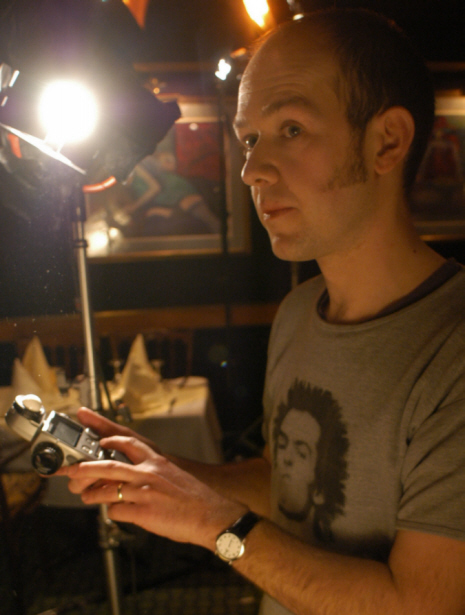
Richard working on The Gigolos
Reception
The Gigolos is very entertaining and remarkably successful given that so much of it was improvised. Nevertheless, selling a film which has no big names actors, spectacular special effects, gruesome murders, fast car chases or slapstick comedy routines, was a hard task for Punk Cinema. What’s more, the fly-on-the-wall documentary style is clearly too subtle for most cinema audiences, who are accustomed to highly-dramatic Hollywood-style spectacles.
“It would take about ten minutes in the screenings for people to realize what they were watching and that’s probably ten minutes too late for most,” reflects Richard. “I think there is an audience there but the hard thing is reaching the audience. You might think that nowadays it is easier than it has ever been to launch an independent film and help it find an audience, but I don’t think that’s the case, despite the proliferation of channels and routes to market.
“With The Gigolos we pretty much raised the finance ourselves, then took it to film festivals and got a great response. Critically it got lots of great coverage. Unfortunately we still couldn’t interest any of the traditional film distributors, although I am not surprised because there were no stars in the film and I was an unknown director. They didn’t really know if it was a comedy, buddy movie or drama, so we ended up pretty much distributing it ourselves, and then managed to sell it to the BBC for TV and get the BFI to distribute the DVD.
“So, we didn’t really have any pressure, apart from trying to book the cinemas and find a slot for it. And we were constantly buoyed by the fact that when Withnail and I was released the first time it played in one cinema and closed after a week. So, getting a big cinema release isn’t necessarily the be-all and end-all of making a film that stands the test of time.” TF
Part 2 of Richard’s interview can be found here: Part 2

